Online Flower Arranging Classes: Turn Your Bloom Skills into a Side Hustle
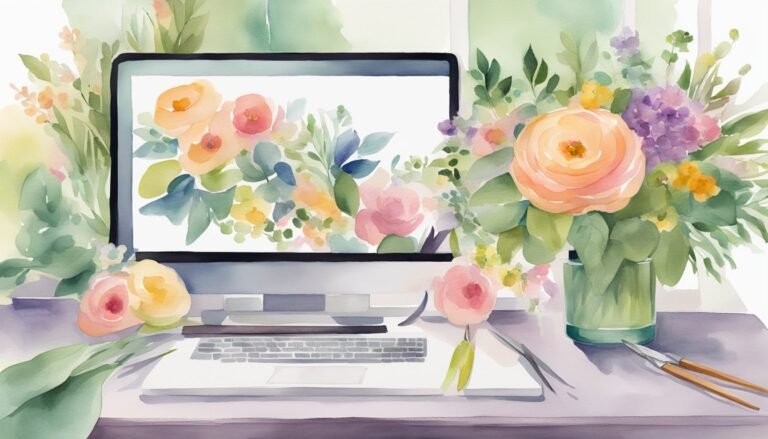
Looking to add a creative and profitable side hustle to your daily routine? Online flower arranging classes can be a fantastic way to turn your love for flowers into a rewarding hobby or even a new career.
Whether you’re a beginner or have some experience, there are numerous options available to help you get started and hone your skills.
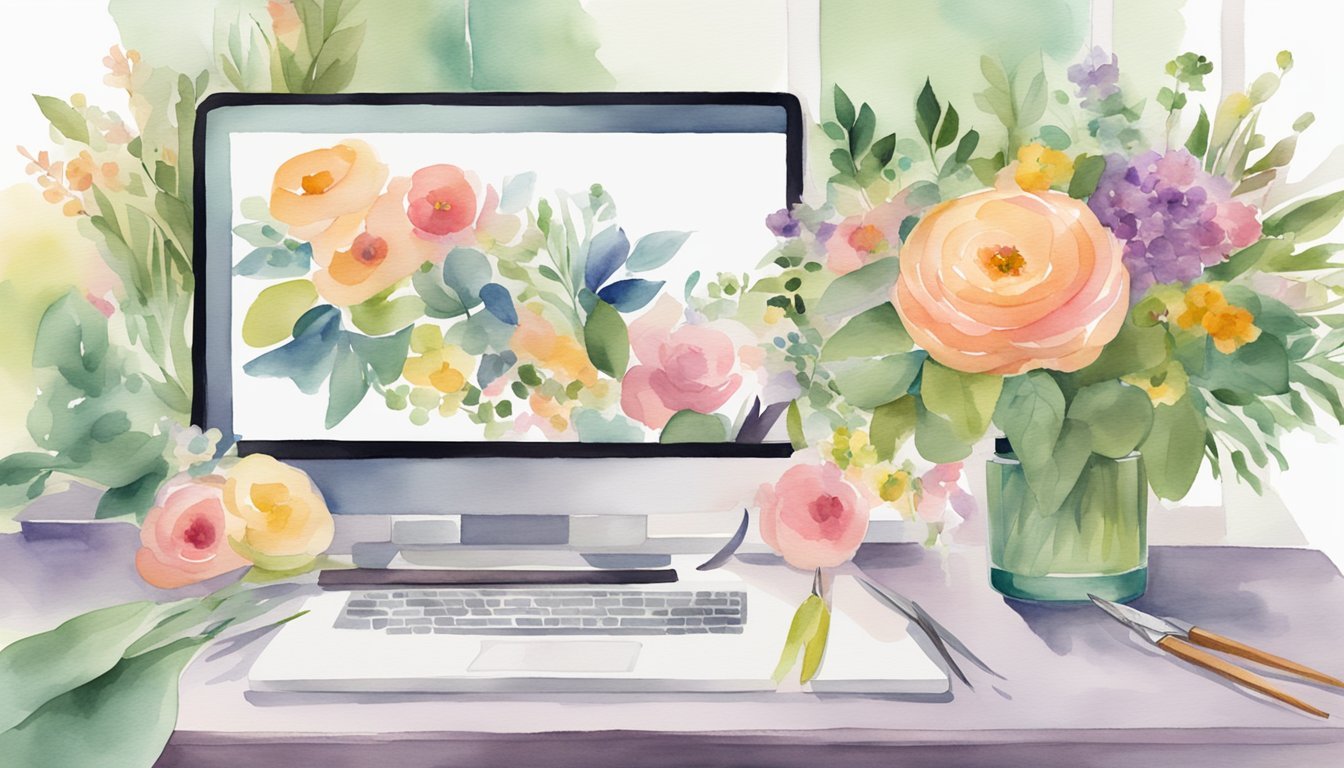
From beginners’ courses that teach the basics of floral design to more advanced programs that offer career certifications, there’s something for everyone.
With platforms like Skillshare offering budget-friendly courses, and Floral Design Institute providing professional certifications, you can easily find an online class that fits your goals and budget.
Taking flower arranging classes online can also help you build connections in the floral design community.
Websites like Team Flower offer interactive sessions where you can learn from experts and network with fellow floral enthusiasts.
This can be invaluable if you’re considering turning your skills into a side business or exploring new career opportunities.
Key Takeaways
- Online flower arranging classes can be a profitable and creative side hustle
- Various platforms offer courses suitable for beginners to advanced learners
- These classes provide opportunities for certification and community networking
Getting Started With Online Floral Classes
Jumping into the world of online floral classes can be exciting and rewarding.
You’ll learn the basics of floral design, how to choose the best course for your needs, and what to expect from the course structure.
Understanding the Basics of Floral Design
Starting your journey in floral design involves understanding the main elements and principles.
You’ll learn about color harmony, texture, and balance.
These fundamentals will help you create beautiful and cohesive arrangements.
Most classes begin with an introduction to floral design, covering how to handle flowers properly.
You’ll get familiar with essential tools like shears, floral tape, and foam.
By grasping these basics, you’ll be well-prepared for more advanced concepts.
Choosing the Right Online Floral Class for You
Selecting the right floral design class depends on your skill level and goals.
If you’re a beginner, look for courses like those at the American School of Flower Design which cater to new hobbyists.
For those looking to turn this into a side hustle, a course that includes career-focused modules, like those from Ashworth College, might be ideal.
Check out user reviews and course previews to ensure the curriculum fits your needs.
What to Expect: Course Structure and Curriculum
Online floral design classes often offer flexible schedules.
You’ll find various formats, including video tutorials, live webinars, and downloadable materials.
Classes might last from a few hours to several weeks.
The curriculum typically includes step-by-step guides on creating specific floral arrangements.
For example, the Fusion Style Floral Design Master Course covers advanced techniques like binding and tatami.
Expect hands-on projects and assignments to practice your skills.
Classes may also cover business aspects if you’re interested in making floral design a side hustle.
Topics like marketing and client management can be very valuable in turning a passion into a profitable venture.
The Tools of the Trade

Getting started with flower arranging as a side hustle means having the right tools for the job.
From essential everyday tools to advanced instruments for complex arrangements, you need the right equipment to create stunning bouquets and centerpieces.
Essential Tools for Aspiring Florists
To dive into floral design, you’ll first need some basic tools:
- Floral shears: These are sharper than regular scissors and help you cut flower stems cleanly.
- Floral foam: Also known as oasis, it stabilizes your flowers in arrangements and keeps them hydrated.
- Wire and tape: Floral wire supports delicate stems, and floral tape helps bind and secure them.
- Vases and containers: Essential for creating beautiful centerpieces.
Other important tools include a good pair of gloves to protect your hands, a cutting mat to safeguard surfaces, and a small spray bottle for misting arrangements to keep them fresh.
All these basics will help you start crafting lovely, professional-looking flower designs.
Advanced Tools for Complex Arrangements
As you get better at floral design and take on more complex projects, you’ll need advanced tools:
- Cage design grids: Useful for supporting large or elaborate arrangements.
- Bouquet holders: Essential when making bridal bouquets or handheld arrangements.
- Flower frog: A heavy, spiked insert placed in the bottom of bowls to hold stems in place.
- Advanced shears and pruners: These can handle thicker and tougher stems, allowing for more variety in your designs.
For intricate techniques like binding/tatami or hammering flowers, specialized tools give you the precision required to make unique and eye-catching floral designs.
Investing in these advanced tools can help you move from simple arrangements to stunning professional arrangements, perfect for weddings and special events.
Designing Your First Arrangement
Starting your first floral arrangement might seem tough, but with some basic skills and a focus on balance and harmony, you can create stunning displays.
Understanding core principles and playing with colors and textures helps a lot.
Fundamentals of Flower Arrangement
When you start designing, remember the fundamentals.
Begin with selecting fresh flowers.
Choose a variety that includes focal flowers, fillers, and greenery.
This combination adds depth and dimension.
Next, think about the size and shape of your arrangement.
Choose a vase or container that fits the style you’re aiming for.
For example, a tall vase suits long-stemmed flowers, while a low, wide vase works best for a horizontal arrangement.
Cut the stems at an angle to help them absorb more water.
Remove leaves that will be below the waterline to keep the water clean and the flowers fresh longer.
Start arranging by placing the focal flowers first.
These are typically larger and more eye-catching.
Fill in around them with secondary flowers and fillers.
Rotate your arrangement as you work to keep it balanced.
Creating Balance and Harmony with Color and Texture
Balance and harmony are key in any floral design.
Use color theory to help choose your flowers.
Complementary colors (opposites on the color wheel) can create vibrant contrasts, while analogous colors (next to each other) offer a more harmonious look.
Texture adds interest and depth.
Mix smooth, glossy leaves with delicate, feathery flowers to create contrast.
Varying textures can make your arrangement feel dynamic and interesting.
Think about the spacing of your flowers.
Avoid crowding too many elements in one spot.
Let each flower breathe and be seen.
Use odd numbers of flowers, as this often looks more natural and pleasing to the eye.
Balance heavier flowers with lighter ones to avoid a lopsided look.
Keep stepping back to view your work from different angles.
This ensures your arrangement looks great from all sides.
Types of Floral Arrangements
When exploring the world of floral arrangements, you’ll come across several styles that can be crafted for different purposes.
Each type brings its own unique charm and can be fascinating to learn, whether for a side hustle or personal enjoyment.
Classic Bouquets and Centerpieces
Classic bouquets are often round and symmetric, featuring a mix of flowers and greenery.
They are perfect for gifting and often seen in homes or as part of special events.
Centerpieces are arranged to be admired from all angles and commonly used as dining table decor.
They vary in size and style, from compact posies to extensive designs with cascading elements.
Key elements include:
- Symmetry: Balanced look
- Diversity: Various flower types
- Vibrancy: Mix of colors
Special Occasion Arrangements: Ceremonies and Receptions
For special occasions like weddings and parties, arrangements are designed to fit specific themes and moods.
Ceremony flowers might include large altar arrangements or pew decorations, creating a harmonious look for the event.
Reception flowers can range from elegant table centerpieces to elaborate entryway displays.
They often follow the theme or color scheme of the event.
Common features:
- Thematic Cohesion: Matching the event’s style
- Versatility: Fits various ceremony and reception spots
- Customization: Tailored designs for personal touch
Trending: Cascading Garden-Style Bouquets and Flower Crowns
Cascading garden-style bouquets have a more natural, flowing appearance and are trending for their romantic, whimsical look.
These arrangements often feature trailing vines and a mix of blooms that flow naturally.
Flower crowns are also fashionable, perfect for weddings, festivals, or photoshoots.
They embrace a boho-chic aesthetic and can be made with fresh, dried, or artificial flowers.
Highlights include:
- Natural Flow: Organic, unstructured design
- Romantic Feel: Perfect for dreamy occasions
- Versatility: Suitable for many events and settings
Exploring these types can vastly improve your floral design skills and potentially become a lucrative side hustle.
Selecting a Learning Platform
When choosing an online platform for flower arranging classes, think about the types of classes offered and the support you might need.
Some platforms focus on budget-friendly options, while others offer more in-depth courses led by experienced instructors.
The Pros and Cons of Popular Online Learning Platforms
Skillshare is great if you’re on a budget.
It offers a wide range of classes, including floral design workshops, but you might not get in-depth instruction on specific techniques.
Udemy has a mix of prices and a pay-per-course model.
You’ll find reviews and ratings helpful when picking the right course.
The quality of instruction can vary, so check ratings carefully.
MasterClass is known for high-quality production and renowned instructors.
If you want polished, professional lessons, this may be your best bet.
However, it is pricier, often requiring an annual membership.
Domestika focuses on creative arts, offering detailed and project-oriented courses.
It’s perfect if you want hands-on projects and step-by-step guidance.
Prices range, with frequent discounts available.
CreativeLive offers in-depth floral design workshops.
It’s a superb option for those looking for advanced skills, though the courses can be expensive compared to others.
Community and Instructor-Led Learning Portals
Building a side hustle in floral design means you’ll need more than just video lessons.
Platforms with vibrant communities can provide extra support and inspiration.
Skillshare has a thriving community where you can share projects and get feedback.
The interactive aspect can be very motivating.
Udemy includes Q&A sections where learners can ask questions.
It’s less about community but more about direct interaction with instructors.
MasterClass doesn’t have the same level of community interaction.
It’s more focused on high-quality content, but if you need personal feedback, you might find it lacking.
Domestika excels in fostering a community among its users.
You can interact with both instructors and fellow students, ideal for networking and growth.
CreativeLive offers live workshops where you can ask questions in real-time.
The community aspect is robust, making it easier to interact directly with instructors and other learners.
Advanced Floral Design Techniques
Advanced floral design techniques help you enhance your skills, allowing you to create unique and intricate flower arrangements.
You’ll learn how to build on basic design concepts and explore specialty styles and techniques that set your work apart.
Building on Basic Design Concepts
To master advanced floral design, you need a strong foundation in the floral principles of design.
This includes understanding elements like balance, proportion, rhythm, contrast, and unity.
These principles guide how to arrange flowers in a way that is visually appealing and harmonious.
You’ll explore signature arrangements that require a deeper understanding of form and structure.
For example, manipulating flower stems to create intricate shapes or using floral foam to secure blooms in unconventional ways.
These techniques bring complexity to your designs and make them stand out.
Advanced designers often experiment with color theory and texture combinations.
This can involve mixing unexpected color palettes or incorporating non-traditional elements like branches, berries, or even fruits into your displays.
Such skills are essential for creating memorable pieces that have a striking impact.
Learning Specialty Styles and Techniques
Specialty styles like Ikebana, the traditional Japanese art of flower arranging, require precision and an eye for minimalism.
Unlike typical arrangements, Ikebana focuses on the lines and spaces within the arrangement, emphasizing simplicity and elegance.
Learning techniques like binding, tatami matting, and hammering can elevate your flower arrangements.
For instance, the Fusion Style Floral Design Master Course on Udemy focuses on these advanced structural designs, offering a variety of creative ways to display flowers.
Workshops and courses often include step-by-step video demonstrations, written guides, and online quizzes.
These resources help you master new skills and apply them effectively in real-world scenarios.
Enhancing your abilities in these specialty techniques can help you turn your passion for floral design into a profitable side hustle.
Pricing and Membership Options
When it comes to online flower arranging classes, there are various pricing points and membership options available depending on what you’re looking for.
Most platforms offer flexible payment plans and budget-friendly costs, making it easy to find an option that fits your needs.
Comparing Costs of Popular Classes
Many popular online flower arranging classes are accessible at different price ranges.
For instance, Skillshare offers budget-friendly courses with a subscription model costing about $19 per month.
On the other hand, courses like the $10/month MasterClass membership provide a more structured learning path, but with a yearly billing cycle.
For those just starting, cheaper options like Udemy’s hobbyist courses are great, often priced around $20 per course.
If you’re looking for advanced training, programs offered by institutes like Floral Design Institute might be more expensive but offer a comprehensive curriculum worth the investment.
Understanding Memberships and Payment Plans
Different platforms have unique memberships and payment plans tailored for every learner.
For instance, MasterClass requires an annual payment, making it suitable for those willing to commit for a longer duration.
Skillshare and Udemy provide monthly subscriptions, allowing you to take classes at your own pace.
Udemy, in particular, offers lifetime access to purchased courses, making one-time payments a great option for flexible learning.
Team Flower offers specialized fast-track classes designed for professionals which might come with higher costs but offer condensed, intensive learning.
Payment plans on platforms like American School of Flower Design might include installment options, making it affordable if you’re starting a side hustle in floral design.
Certifications and Career Advancement
Exploring certifications and building a business foundation are key steps in advancing your career in floral design.
These aspects are particularly important if you’re considering floral arranging as a side hustle.
Gaining Professional Credentials
Becoming a certified floral designer can significantly boost your career.
Programs like the one offered by the Floral Design Institute are an approved pathway to achieve Certified Floral Designer status.
These courses, which typically cost around $2,250, cover comprehensive training similar to in-classroom programs.
Enrolling in such programs not only enhances your skills but also makes your services more attractive to potential clients.
Certifications from recognized institutions like the American School of Flower Design or Penn Foster Career School provide you with professional credentials that can open doors to better job opportunities or help you start your own floral design side hustle.
Building a Portfolio and Business Foundations
A strong portfolio is essential when establishing your floral design business.
Online classes like the Certified Floral Design course can help you create a diverse range of arrangements to showcase.
These courses often span 8-12 weeks and guide you through various techniques, allowing you to build a versatile and impressive portfolio.
To kickstart your business, you should focus on attracting clients and managing business essentials.
Platforms like Udemy offer budget-friendly courses that can provide hobbyists with creative ideas and business management tips.
Investing in these resources can help you set competitive prices, manage supplies efficiently, and market your services effectively, ensuring steady business growth.
Instructor Profiles and Teaching Philosophies
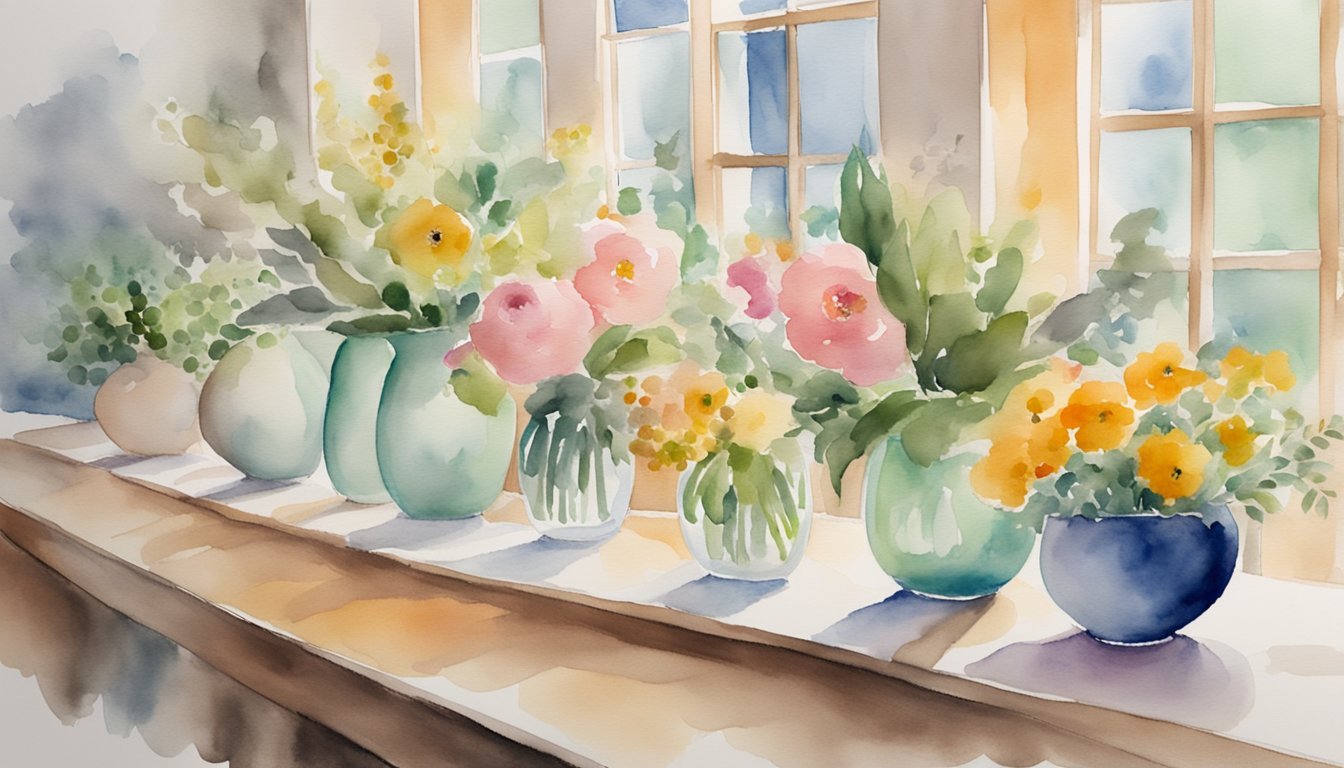
Learning from experienced instructors can make a massive difference in your floral design journey.
Whether you prefer a structured class led by an expert or a flexible schedule that suits your time, there’s something for everyone.
Instructor-Led vs. Self-Paced Classes
Instructor-led classes allow you to gain insights and real-time feedback from professionals.
For example, Maurice Harris, an award-winning florist, shares his creative process in a MasterClass workshop.
In these sessions, you can get tips directly from experts and ask questions as you go along.
On the other hand, self-paced classes offer flexibility.
Programs like those from the Floral Design Institute provide you with all study materials and training videos.
This format is perfect if you need to fit learning around your schedule, making it a great option if you’re considering floral design as a side hustle.
Building a Community and Networking
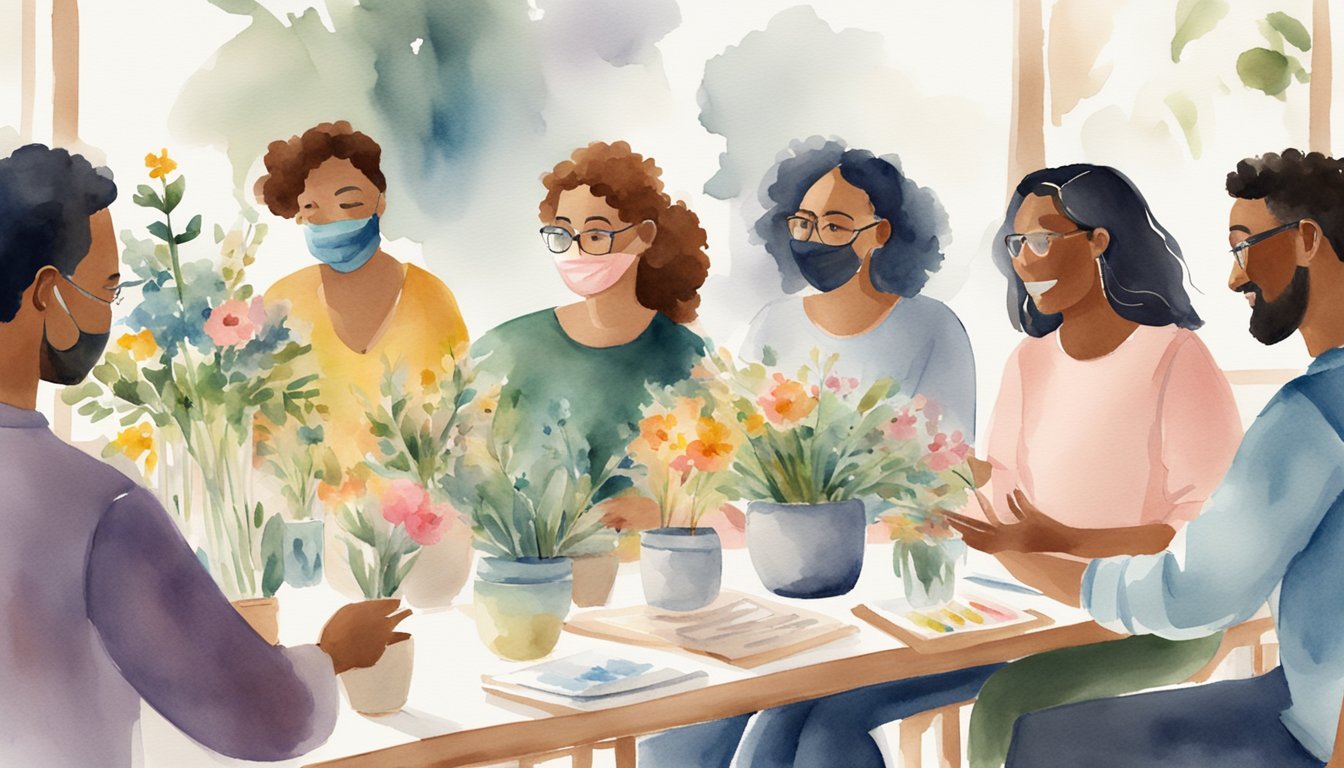
Joining online flower arranging classes not only teaches you new skills but also connects you with other floral enthusiasts.
This can lead to valuable networks and opportunities for feedback, crucial for sustainable growth in the floral industry.
Engaging with Fellow Hobbyists and Professionals
Participating in online forums and social media groups dedicated to flower arranging is essential.
You can share your work, ask for advice, and learn from the experiences of others.
These communities are often very supportive and can provide insights you might not find in a class.
Attend virtual networking events and webinars hosted by platforms like Team Flower.
These events help you meet professionals in the floral industry, who can offer guidance and tips.
Engaging with others in these communities also helps you stay updated on trends and techniques.
Leveraging Communities for Feedback and Growth
Feedback is invaluable for anyone looking to improve their craft.
Online communities offer a platform for you to receive constructive criticism on your floral arrangements.
Posting your designs in groups such as those on Team Flower can lead to helpful suggestions and new ideas.
These groups are also great for finding opportunities to collaborate.
Whether it’s joining a group project or helping out with a large event, these experiences help you grow both your skills and your network.
Networking within these communities can lead to opportunities for side gigs, turning your hobby into a side hustle.
Frequently Asked Questions
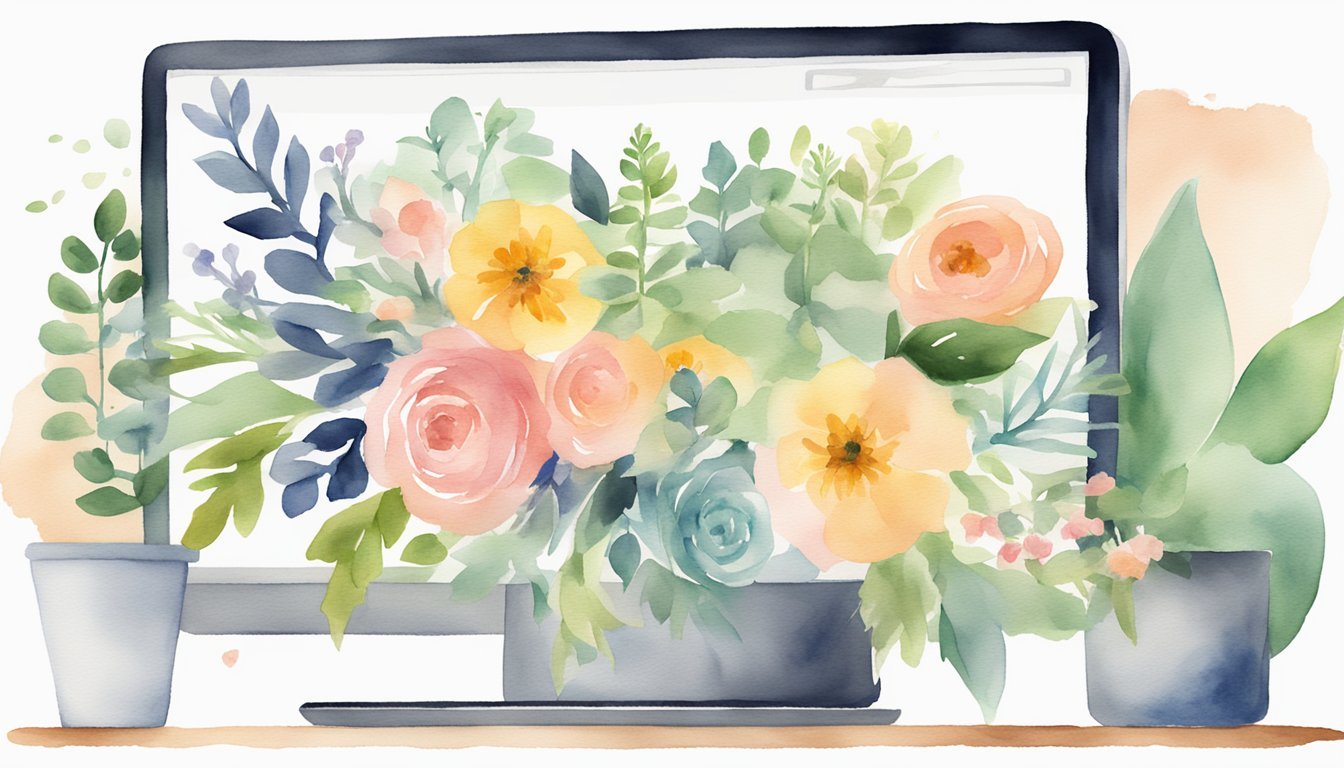
Online flower arranging classes offer a flexible way to learn floristry, whether you’re looking to start a side hustle or simply enjoy a new hobby.
Below are answers to common questions about these courses.
What are the best online flower arranging classes available right now?
Several top-notch online flower arranging classes cater to all levels. Team Flower offers fast-track courses, perfect for diving into specific techniques quickly.
For a detailed list of options, The Spruce Crafts recommends Penn Foster Career School for comprehensive learning and Skillshare for budget-friendly choices.
Are there any free online floral design classes for beginners?
Yes, there are free options available for learning flower arranging as a beginner. Create Academy offers free courses, making it an excellent resource for those looking to start without spending money.
How can I learn floristry online on my own?
Learning floristry online on your own is possible with the right resources.
Online platforms like Udemy and Kay’s Flower School provide comprehensive lesson plans and step-by-step guides.
You can follow video tutorials, read guides, and practice the techniques at home.
What’s a good alternative to Oasis for flower arranging?
Floral designers often look for alternatives to Oasis, the common floral foam.
Eco-friendly options like chicken wire and reusable grids are popular.
Techniques taught in advanced courses such as Udemy’s Fusion Style Floral Design Master Course cover these materials.
What skills do I need to start making floral arrangements?
To start making floral arrangements, you need basic skills such as understanding flower types, color theory, and arrangement techniques.
Courses from platforms like Team Flower can equip you with these foundational skills, helping you create stunning designs.
Are there floral design class options at local stores or hobby centers?
Yes, local stores and hobby centers often offer floral design classes.
Big craft stores like Michaels and local florists may have workshops.
These classes provide hands-on experience and personalized guidance, ideal for honing your skills and meeting other flower enthusiasts.

